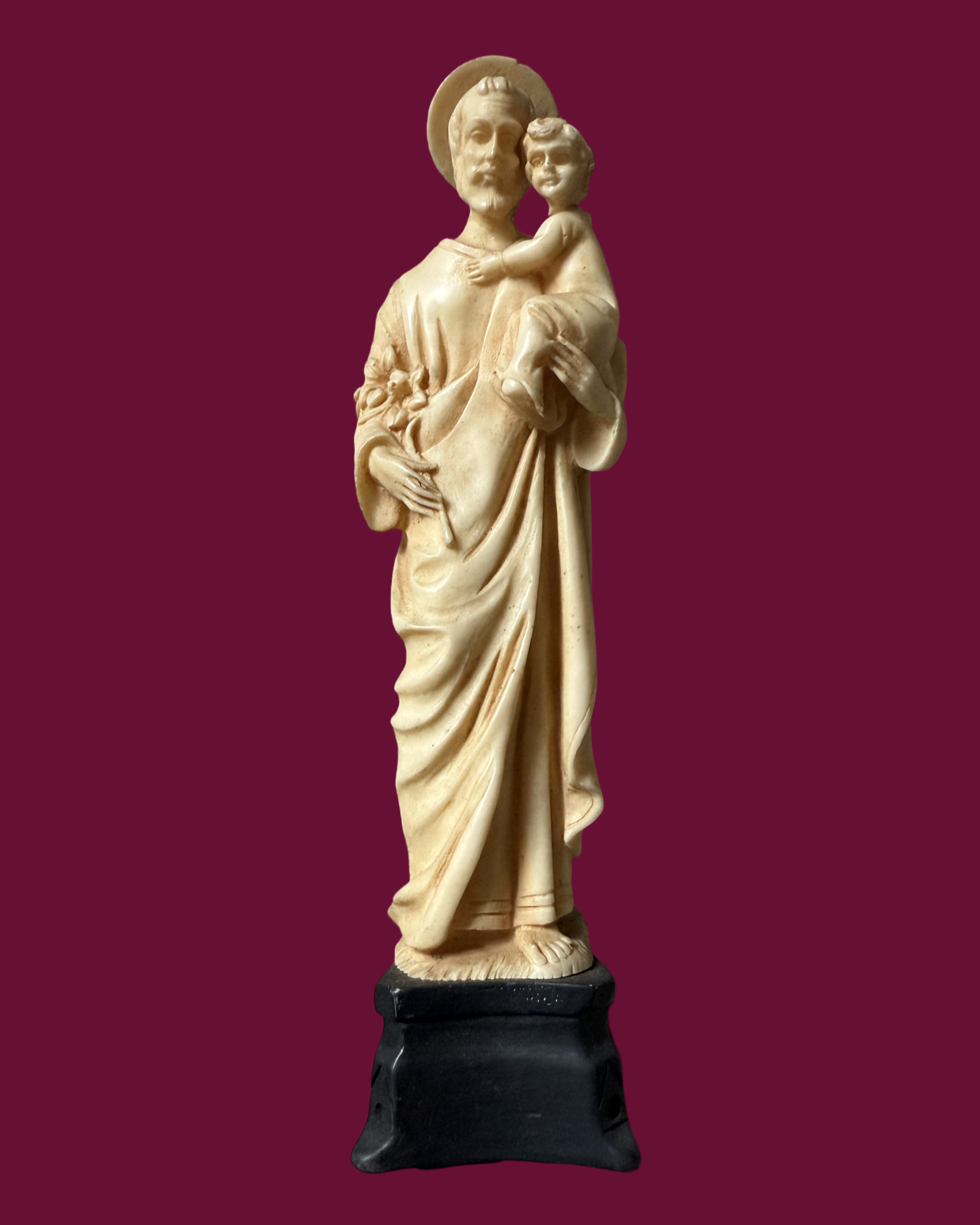St. Joseph: Silent Protector
Do you know the way to San Jose?
Saint Joseph, revered as the husband of the Virgin Mary and the earthly father of Jesus Christ, holds a significant place in Christian tradition. He was a carpenter who taught his son his trade. His principal feast day, known as Saint Joseph's Day or the Solemnity of Saint Joseph, is celebrated on March 19th each year. This observance has been a part of Western Christianity since at least the 10th century and is recognized by various denominations.
Saint Joseph is honored as the patron saint of workers, fathers, families, and the universal Church, embodying virtues such as humility, diligence, and unwavering faith. He is also the patron Saint of palliative care, invoked by those who are dying and want to receive a peaceful (i.e. good) death.
Celebrating Saint Joseph’s Feast Day
St. Joseph’s Altar, photo courtesy of www.neworleans.com
One of the most cherished traditions associated with Saint Joseph’s Day is the creation of elaborate altars, particularly in Sicilian- and Italian-American communities. These altars, known as “St. Joseph’s Tables,” are built as a way of giving thanks for prayers answered through the saint’s intercession. The tradition is believed to have originated in Sicily during the Middle Ages when a severe drought and famine devastated the region. The people prayed to Saint Joseph for relief, and when their prayers were answered with much-needed rain, they prepared grand offerings in his honor, sharing food with the poor as an act of gratitude.
St. Joseph’s altars are typically set up in three tiers, symbolizing the Holy Trinity, with a statue or image of Saint Joseph at the highest level. They are adorned with flowers, candles, and a variety of food items, all of which hold symbolic meaning. Because Saint Joseph’s feast day falls during Lent, the tables traditionally consist of meatless dishes such as pasta, seafood, and an array of breads and pastries. One of the most important elements is the fava bean, which is considered a symbol of good luck and prosperity. Other common foods include sesame-coated breads shaped like crosses, lilies, and staffs (all representing Joseph’s virtues), as well as zeppole, a deep-fried pastry often filled with custard or ricotta. In keeping with the tradition’s roots in charity, these altars are open to the community, with visitors encouraged to partake in the meal and leave donations for the less fortunate.
A few delightful superstitions and symbolic associations accompany the fare on St. Joseph’s altars. The Times-Picayune’s Ann Maloney explains a few:
“Many altars offer gift bags to visitors. They usually contain sweets, such as fig cookies, a piece of bread, a blessed fava bean and a prayer card. Rather than eat the bread, some New Orleanians believe you should put it in the freezer. Then, when the next storm is approaching, say a prayer break the bread and scatter it in your yard to protect your property.”
Breadcrumbs sprinkled on pasta and vegetable dishes are said to symbolize sawdust, evoking St. Joseph’s occupation as a carpenter, and St. Lucy's Eye Pies feature a top crust with the eyes cut out to pay homage to the patron saint of the blind.
Citrus fruits are abundant on altars, especially lemons, and the folk belief is that one who steals a lemon from the altar will get a spouse in due course.
In some countries, such as Italy, Spain, and Portugal, March 19th also serves as Father’s Day, honoring Saint Joseph’s role as a model of paternal care and devotion. Additionally, in 1955, Pope Pius XII established May 1st as the Feast of Saint Joseph the Worker, aligning with International Workers’ Day to highlight the dignity of labor and Saint Joseph’s example as a dedicated craftsman. These feast days and associated traditions reflect a deep cultural and spiritual appreciation for the saint’s legacy.
Why do Catholics bury statues of Saint Joseph?
Another well-known ritual tied to Saint Joseph is the practice of burying a small statue of him in the yard when attempting to sell a home. This tradition, believed to bring good fortune and expedite a sale, has been embraced by homeowners, real estate agents, and devout Catholics alike. The exact origins of this practice are uncertain, but some trace it back to European religious communities who buried medals or statues of Saint Joseph while praying for land and property needs. To perform the ritual, the statue is typically buried upside down near the “For Sale” sign or in the front yard, symbolizing an urgent plea for Saint Joseph’s assistance. Once the home is sold, the statue is unearthed and placed in a place of honor in the new residence as an expression of gratitude. While some approach this as a mere superstition, for many, it remains a meaningful act of faith and trust in Saint Joseph’s guidance over home and family matters.
The veneration of Saint Joseph and the customs surrounding his feast days highlight a rich tapestry of faith, charity, and community. Whether through the building of altars, the humble burying of a statue, or the broader celebration of his virtues, Saint Joseph’s influence continues to inspire believers across the world. His life serves as a testament to the enduring values of trust in divine providence, love of family, and the importance of serving others with humility and devotion.
Small statue of Saint Joseph holding the Christ Child; Italy; House of Good Fortune Collection
Detail of statue that was buried to expedite a house sale.
Further Reading: 13 St. Joseph Day Altar traditions, symbols, superstitions by Ann Maloney; March 17, 2016; The Times-Picayune




